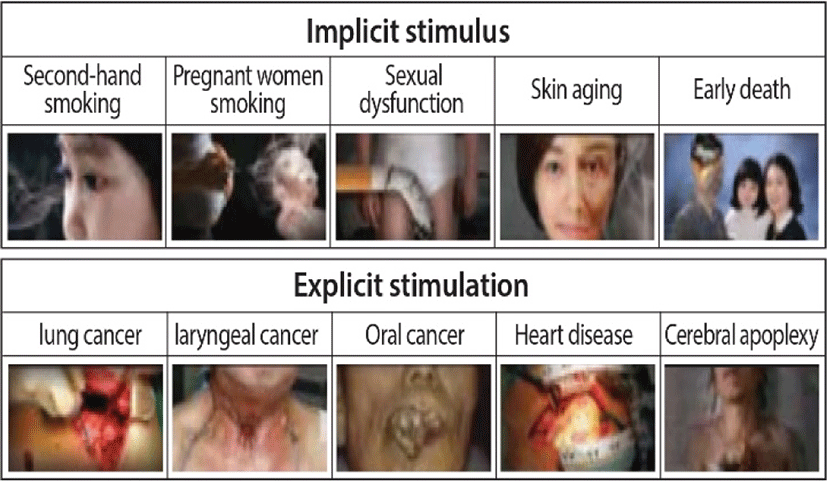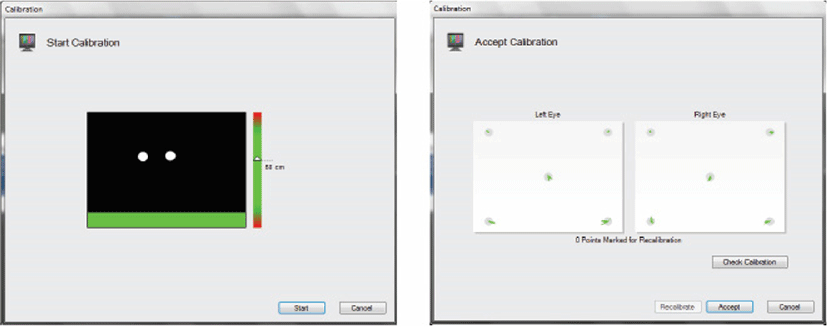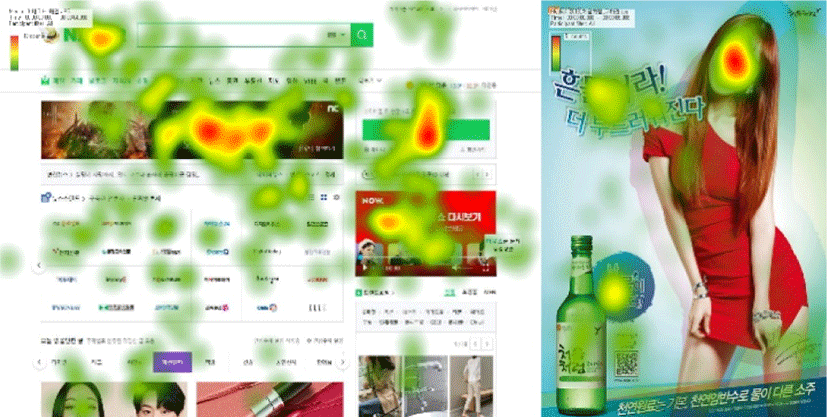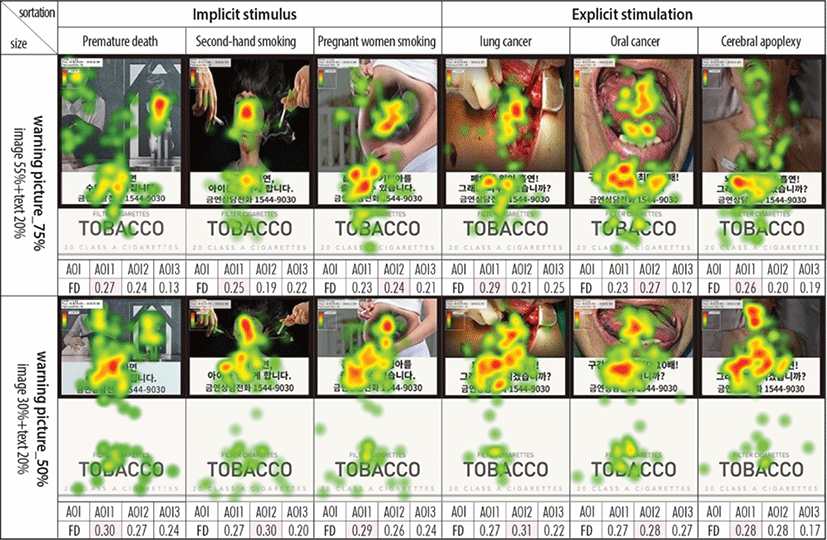I. INTRODUCTION
Despite the increased price of cigarettes in 2015, the number of non-smoking zones has rapidly increased. The placement of images warning about the dangers of smoking on cigarette packages began at the end of 2016 in Korea while the smoking rate remains high.
According to the Korea National Health & Nutrition Examination Survey [1] issued by the Korea Disease Control and Prevention Agency from 1998to 2018, men who smoke at least one pack of cigarettes a day decreased from 54% in 1998 to 31.2% in 2018 (a decrease of 42.2% over 20 years), while women smokers decreased from 27.5% in 1998 to 10.8% in 2018 (60.7% decrease over 20 years), which showed a significant decrease in both genders.
However, during this same period of time, the age which a smoker begins smoking has decreased from 20.8 years of age to 18.8 years of age for men while women smokers began smoking decreased from 29.4 years of age to 23.5 years of age; this signifies the problems of exposure and attraction to smoking to younger people compared to the past 20 years. There is also a direct relationship between smoking and alcohol consumption and stress, and an inverse relationship between smoking and income. For both male and female smokers, those who drink, have more stress and have less income showed a higher rate of smoking compared to their peers.
It is well known that smoking causes various diseases such as cancer, heart disease, lung diseases, diabetes, and arthritis. Smokers have a shorter life expectancy compared to non-smokers; it is therefore in the best interests of society to enact regulations and policies which would lower the rate of smoking as well as reduce the overall number of habitual smokers.
Since the enactment of the National Health Promotion Act in 1995, the smoking rate appears to have decreased through active non-smoking policies such as the designation and expansion of non-smoking areas, cigarette packaging restrictions, non-smoking support services, restrictions on advertisements and sponsorship of tobacco, and adult authorization devices incorporated in tobacco vending machines. However, additional research and policies in response to research are urgently needed such as scientific evidence and consistent monitoring of health risks of new types of cigarettes such as electronic cigarettes [2]. Since the first warning images and statements were added to cigarette packages in 2016, related research has been published in Korea but more practical perspectives are required to identify their impact. The research on warning images on cigarette packages conducted in Korea mostly adopted the self-rated validation method [3-4], but experiments on the impact of images and visual attention are required for an objective conclusion.
Accordingly, this research is going to examine the relationship between visual perception and emotion by the types of fear responses elicited from warning images on cigarette packaging as well as the effectiveness of the size of such images through questionnaires and eye-tracking experiments.
II. THEORETICAL REVIEW
Social marketers both home and abroad are committing to minimizing the harm from smoking through using proactive risk communication strategies such as warning images on cigarette packages. Canada was the first country to introduce graphic warnings on cigarette packages in 2001. Since then researchers from various fields such as marketing, psychology, communication and consumer science have validated that these warning images are effective at increasing a smoker’s motivation to quit, thus resulting in behaviors to quit, creating negative emotions on smoking and discouraging non-smokers to experiment with smoking; more countries today require graphic warnings on the packaging which has greatly expanded research in this area [5-8].
In the research, warning images on cigarette packaging, the phrases used in the warnings, the size of the images, and the size of the text are factors considered to have had an impact on the smoking index; other researchers studied their effects on awareness of smoking behavior and the feeling to quit smoking and other emotional effects after being exposed to a warning image. Also, one of the research studies found that text accompanied with graphic images received more attention than text-only as test subjects were more likely to retain the memory of the image and allow more time to process information and contemplate on the dangers of smoking [9].
In addition, warning images are more effective with discouraging teenage smoking than text-oriented messages, as was demonstrated by experiment, FCI research, and population-based questionnaires, while longitudinal studies performed in Canada, Australia, the UK and the US found a meaningful relationship between the exposure to warning messages and quitting smoking behaviors; the effects to the struggles of quitting, the successes of quitting, and the resultant decrease of the smoking rate was consistently identified [10-12].
Hammond and Willemsen (2005) had a follow-up investigation on the effects of fear and disgust from warning images on smokers to quit smoking and the results showed both feelings impacted the quitting smoking trial [13]. The warning images depicting graphic physical risks such as lung cancer, oral cancer, skin aging, and the discolored teeth would raise negative attitudes such as fear and disgust while the visually vivid and graphic details of the harmful consequences of smoking were quickly and easily understood than reading texts; inducing perceptional and visual attention were highly effective [14-15].
Previous research widely used subjective measuring methods such as questionnaires and consumer feedback while research using the eye-tracking method was rather lacking.
The emotional message appeals used in advertisements are distinguished with both positive appeals such as humor and negative appeals such as fear and guilt. A fearful or threatening appeal is the most common approach in negative advertising. According to Unger and Stearns’ TV advertisement content analysis, negative advertisements accounted for 18.8% of overall TV advertisement and 90% of these negative appeals included fear [16].
Fear is the human emotion in response to perceiving a threat or danger intensely related to oneself. A fear in advertising is used to create a negative psychological effect such as fright and dread of physiologically and behaviorally risky circumstances, and is recognized as a factor in persuasive communication. A fear appeal can be distinguished by its perceived threat and perceived efficacy. The perceived threat is when people recognize a highly dangerous situation and believe in the possibilities of it happening while perceived efficacy is believing in the recommended content of the message and then acting on the recommended course of action [17].
A warning image on cigarette packages is one of the fear appeals in advertisements that use the stress from fear to change people’s attitudes or behaviors.
At the beginning of the 20th century, William McDougall, an American psychologist, insisted that all people have basic instincts such as hunger, sex, hate, curiosity, fear, and confidence and that when people received threatening stimuli from fearful things, they are encouraged to find solutions due to anxiety. Maslow’s Hierarchy of Needs explained that humans have needs for physiological safety, love and belonging, esteem, and self-actualization which interact with one other to form a pyramid. Developing a fear is the foundation of safety which induces people to look for ways to escape danger. In this regard, when people see a warning image, they are aware of the harm of the diseases which afflict their bodies.
According to the research of Witte, the effect of fear appeals should visually and linguistically be explicit and vivid in order to maximize the individual relevance to the viewer. A viewer experiences fear when a message is delivered in a specific and shocking matter emphasizing both the susceptibility of being at risk and the severity of the risk [18].
A warning image on cigarette packages with its negative message stimulates people’s vision and induces fear and disgust to deliver the message of the risks of smoking and consequently lead to the decrease or quitting of smoking.
The warning images include 10 types of harms of smoking including indirect smoking, cerebrovascular diseases, sexual disorders, heart disease, injuries to the fetus during pregnancy, early death, lung cancer, skin aging, throat cancer, and oral cancer. They are categorized into implicit and explicit stimulation. The explicit stimulus warning images show high-resolution photos of the diseases resulting from smoking, eliciting intense disgust and fear which is a part of the appeal required in the advertisement. The implicit stimulus warning images also deal with health but use a more metaphoric approach such as those implying sexual dysfunction, early death, and indirect smoking. The implicit stimulus warning images have a lower fear threshold compared to explicit stimulation, yet can still evoke feelings of guilt and reservations about smoking to people and therefore, is included in the emotional appeal of advertisement (Fig. 1).
There is an argument whether higher fear of a warning image would lead to an increase in the motivation to quit smoking of smokers. Maynard identified the avoidance of eye contact in regular smokers with an eye tracker when they were presented with a warning image from a cigarette package. If the images of explicit stimulation are too intense, people would unconsciously avoid eye contact and end up frustrating the purpose of the advertisement [19].
Research on warning images on cigarette packages consistently has focused on factors such as size, color, arrangement of images, and level of fear appeals of images. One of the researchers reported that the size of warning images has a direct effect on quitting smoking [20].
Canada introduced warning images to cover 50% of the cigarette package, with 99% of smokers and 49% of non-smokers able to immediately recognize the image. 44% of these smokers said the image increased their quitting motivation while 58% acknowledged that smoking could harm their health. Also, the research performed in Canada determined that when a warning image was enlarged to cover from 50% to 75%, 90%, and 100%of the packaging, it was observed that the larger size demanded more visual attention from adult and teenage non-smokers. In Australia as well, the research showed the image was more effective when the size at the front and back increased. This is because the size of images was in proportion to the level of threat, and therefore, people could easily recall the images and the dangers they were conveying [21].
When looking at an object of interest, the pupil naturally moves to focus on that object. By tracking the movement of the pupil gazing on the object, qualitative information such as what object is being gazed at, the length of time of the gaze, and the manner of the gaze can be identified.
The methods that track eye movement are categorized as fixation, saccade, pursuit, and gaze path. The eye tracker uses non visible near-infrared ray light and a high-resolution camera to project light and record the directions reflected from a pupil. It then uses an advanced algorithm to calculate the position of the eyeball and determine exactly the object that is in focus. Since the position of the eye can be recorded multiple times per second, visual motion and minor movements of the eye can be measured and analyzed; eye-tracking is the only method that can be used to objectively and accurately record and analyze visual behaviors [22].
The Tobii T60 XL used in this research was mainly used in studies in which participants interact through screens or are exposed to stimuli from the screen. These remote eye trackers offer a wide sample rate, with the high-frequency eye trackers providing an especially large amount of data and a high level of detail about eye movements.
An eye-tracker is a device that is able to follow eye movement for a measurement of time, recording eye movement 60 times a second (0.016 seconds), tracking instant movement, and measuring the time when the eye is fixed on a certain subject. Eye-tracking refers to the process of measuring where we look, also known as our point of gaze. These measurements are carried out by an eye tracker, that records the position of the eyes and the movements they make. Eye-tracking measures time of gaze, time of fixation, visiting period and sizes of the pupil, as well as the participants’ emotional responses. People who view subjects of interest react more sensitively, gaze long and revisit the image several times, and therefore retain the memory longer. However, subjects of little interest or even hated are given only quick glances or even completely avoided. A warning image on cigarette packages usually depicts diseases which evoke the universal fear of death. When staring at images related to death, feelings of uneasiness and fear arise, leading to associations in the brain processes of the visual fear and eventually, to the conclusion to quit smoking. Eye-tracking objectively measures these eye movements such as attention or avoidance, therefore, it is used as a fundamental and trusted factor to validate the visual stimulus effect [23].
III. RESEARCH METHOD AND QUESTIONS
Twenty university students from colleges based in Busan participated and every participant was randomly exposed to one warning image.
The purpose of this research is not to determine the most effective warning image but if participants were exposed to several warning messages, there might be a carryover effect occurring, depending on the exposure of the images provided.
As the experimental stimulus, explicit and implicit warning images were used in the cigarette packaging with two different sizes (50%, 75%) in the advertisement (Fig. 3). In order to increase the accuracy of the experimental data, the experiment was conducted after calibration (Fig. 2).
The control variables include age, gender, school, and whether the subject was a smoker or not. Many efforts to restrain smoking are being consistently committed in various approaches. This research aimed to analyze the expression of fear appeals of the main image from various visual factors that exist in cigarette packages and to investigate the fear appealing factors. Also, two types of warning images on cigarette packages are selected: one from implicit and the other from explicit stimulation. Questionnaires were provided and an eye-tracking experiment set different sizes of images (50%, 70%) as an Area of Interest (AOI).
This research used fixation duration as an analysis index among various indexes of eye-tracking (Fig. 1). More eye gazes on the AOI imply how important it is to the participant, which means that the image attracted the attention of the participant. If the average fixation duration is longer, it means it takes longer perceptional process time or has a higher interest. Also, the shorter the average time (entry by gaze) of fixation which occurred, the higher the interest on that part attracting eye gazes. In this regard, the fixation duration was adopted as an analysis index to examine the research questions. Also, a heat map was used to easily identify the frequency of gazes and durations of participants [24].
Heat maps are data visualizations that can communicate important aspects of visual behavior clearly and with great power. Heat maps show how looking is distributed over the stimulus. In contrast to the gaze plot, there is no information about the order of looking in a static heat map. Neither is the focus on individual fixations. Rather, heat maps are a visualization that can effectively reveal the focus of visual attention for dozens or even hundreds of participants at a time.
Eye-tracking heat maps gather and visualize data about where people are looking at and for how long using colors in the eye-tracking software. For example, red indicates where maximum time is spent, while other colors such as orange, yellow, blue, and green depict the transitions between heat levels; a warmer color such as red is considered to be the area where a gaze remained longer [25].
Research question 1: What is the relationship between visual perception and emotion by fear appeals from the warning image on cigarette packages?
Research hypothesis 1: The warning images with explicit stimulation as rational appeals have a higher level of disgust and fear than those with implicit stimulation as emotional appeals.
Research question 2: What is the relationship between visual perception and emotion by the size of a warning image on cigarette packages?
Research hypothesis 2: 75% image of the package would have a higher level of fear appeals than 50% image.
IV. RESULTS OF ANALYSIS
The average age of the 20 participating university students was 22.4 years old. They were given questionnaires asking if they recognize the danger of smoking from advertisement images on cigarette packages.
Eleven students (55%) answered they recognize the images while nine students (45%) answered that they did not. In the question asking if people would be encouraged to quit smoking with an advertising image, two students (10%) answered that it certainly encourages quitting smoking, seven (35%) answered it sometimes does, seven (35%) answered it somehow does, two (10%) answered that it may, and two (10%) answered that it does not at all. In the question asking smokers if they intend to quit smoking after seeing the images, 20% of them answered affirmatively. In the question asking non-smokers if they are likely to suggest quitting smoking to smokers after seeing images, 50% answered they would, which was the highest percentage among the answers.
In examining hypothesis 1 of research question 1 stating that the warning images with explicit stimulation as rational appeals have a higher level of disgust and fear than those with implicit stimulation as emotional appeals, a paired t-test of average FD (Fixation Duration) was set with the AOI image size occupying 75% of the package. When asked about what images elicited the most fear, nine students (45%) selected stroke, nine (42.9%) lung cancer, and eight (40%) smoking during pregnancy. The most disgusting image in the advertising was stroke, selected by ten students (55.6%), followed by oral cancer, selected by ten students (50%), smoking during pregnancy by eight (40%) and lastly lung cancer by eight (40%). Explicit stimulation warning images as rational appeals evoke higher disgust and fear levels compared to implicit stimulation ones as emotional appeals.
The images that were directly related to death were selected by twelve students (63.2%), and indirect smoking by nine (45%), with implicit images being higher (Fig. 4).
The paired t-test result showed the t score is equal to 0.100 and the p score is less than 0.05, which was not statistically meaningful. Therefore, the null hypothesis is adopted and the alternative is rejected denying that “explicit images as rational appeals would have higher disgust and fear levels than implicit images as emotional appeals.” (Table 1). The analysis results were different in the questionnaire and eye-tracking experiment.
| Division | Descriptive statistics | f | t (p) | ||
|---|---|---|---|---|---|
| N | M | SD | |||
| Implicit stimulus | 10 | 1.2740 | 0.39540 | 9 | 0.100 |
| Explicit stimulus | 10 | 1.8530 | 0.77223 | ||
To examine hypothesis 2 of question 2 questioning the difference of fear appeals in the 50% and 75% sized images of the package, the AOI of the image was set and a paired t-test was performed on the average FD (fixation duration).
The result was that t=0.002, and p<0.01, which was statistically significant (standard deviation=0.01). As a result, the null hypothesis was rejected and the alternative was adopted proving that the images of 75% and 50% have a different impact. The average FD of 75% image was 0.3379 while the 50% image was 0.5053, which means participants gazed at the 50% warning image for 0.016 seconds longer (Table 2). Also, this research concurred with the research conclusions of Maynard that people would naturally avoid eye contact when presented with a warning image on cigarette packages. The eye avoidance was highly identified with larger (75%) warning images.
| Division | Descriptive statistics | f | t (p) | |||
|---|---|---|---|---|---|---|
| N | M | SD | ||||
| Fear appeal image size | 75% | 10 | 1.2740 | 0.39540 | 9 | 0.002* |
| 50% | 10 | 1.8530 | 0.77223 | |||
V. CONCLUSION
This research examined the relationship between visual perception and emotion by the types of fear appeals (rational and emotional appeals) elicited from warning images on cigarette packages as well as the effectiveness of the size of such images through questionnaires and eye-tracking experiments. The research found out that the explicit warning images as rational appeals and implicit ones as emotional appeals had no difference in disgust and fear levels while in the questionnaire, explicit images evoked higher disgust and fear levels than implicit ones.
Also, the difference in size was identified between 75% and 50% of the fear-appealing images in the package.
It is pointed out that the domestic warning images fill only 50% of the package, while foreign warning images fill 85% of the packages, which is more effective in conveying a sense of fear to smokers. According to other research, all countries that introduced warning images on the package such as Mexico (100%), Australia and New Zealand (90%), and Thailand (85%) devote more than 50% of the area of cigarette packages to warning images in contrast to those found in Korea, China and Japan [26].
In order to enhance the effectiveness of warning images on cigarette packages in Korea, it is necessary to use warning images which may elicit a higher level of disgust and to increase the size of the images in proportion to the packages compared to the images found in packaging now. For example, as in the case of foreign countries, a regulation to use more graphically appealing images and to fill more than 80% of the packages would be more effective towards discouraging smokers.
Limitations of this research include the fact that the fear utilized in this research was limited to physical fears while disregarding social ones such as disgusting odors or negative gazes smokers experience. Furthermore, it is difficult to generalize the result since the participants in this study were all college students; none of the participants were older smokers and non-smokers.
Further research is recommended to explore the effectiveness of using explicit images on cigarette packaging to increase the public awareness of the dangers of smoking and discourage smoking.








